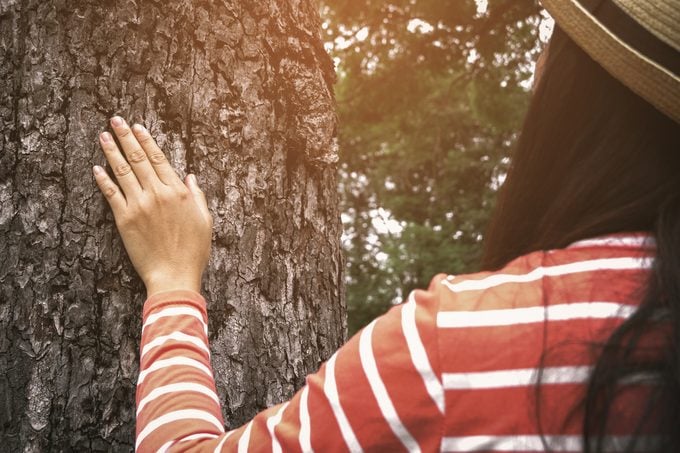Forest Bathing is Scientifically Proven to Improve Your Health
But what is it?

The Japanese practice of forest bathing
Forest bathing is translated from the Japanese practice of shinrin-yoku, which means bathing in the forest atmosphere, or taking in the forest through our senses. “It is simply being in nature, connecting with it through our sense of sight, hearing, taste, smell and touch,” writes Dr. Qing Li in Forest Bathing: How Trees Can Help You Find Health and Happiness. In hopes of improving the overall health of the country, Japan actually introduced a national health program for forest bathing in 1982.
Of course, nature has always been an integral part of health for us, but it’s become even more important as our cities grow. In 1950 the world’s urban population was just 746 million and has since grown to 3.9 billion in 2014, according to the United Nations Population Division. By 2050, 75 percent of the world’s projected 9 billion population will live in cities. City living has its benefits, but there is an impact on our health. Typically, city dwellers deal with more stress and poorer air quality. (These are the worst cities in Canada for air pollution.) Of course, technology has also played a part. We’re increasingly spending more time in front of screens and as a result, today’s kids are suffering from something researchers have coined “nature deficit disorder.’ The 2018 ParticipACTION Report Card assigned Canadian kids a score of D+ for overall physical activity. The report’s expert says kids aren’t moving enough, and this is having an impact on the health of their brains.
What are the benefits of forest bathing?
Forest bathing has both physical and mental health benefits. According to Dr. Li, forest bathing can boost the immune system, increase energy, decrease anxiety, depression and anger, and reduce stress and bring about a state of relaxation. Other research suggests forest bathing as a good strategy for preventative medicine thanks to its ability to promote lower concentrations of the stress hormone, lower pulse rate and lower blood pressure than city environments.
So, why is it that we find nature so relaxing? Breathing in the forest’s natural aromatherapy – the plant chemicals known as phytoncides – has a lot to do with it, writes Dr. Li. These are the natural oils within a plant and the main components (what you actually smell) are terpenes. The major terpenes in forest bathing are:
D-limonene, which smells like lemon
Alpha-pinene, which is the most common terpene in nature and has a fresh, pine scent
Beta-pinene, which smells more like herbs, like basil or dill
Camphene, which has a turpentine, resinous smell
Similar to essential oils, these terpenes have proven benefits.
How long does it take?
Two hours is enough. According to Dr. Li, a two-hour trip to the forest has a similar effect on the mood as longer excursions. While true shinrin-yoku is less about exercise and more about mindfulness in nature (think a brisk walk as opposed to a trail run), forest bathing has also sparked a few derivative practices like eco-yoga and meditation groups that take place in nature. Whatever gets you outside!
Don’t miss the world’s top 20 happiest countries. Plus, 37 ways to make managing stress much easier.




